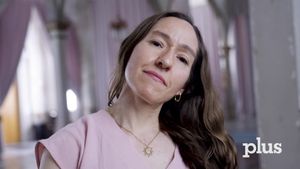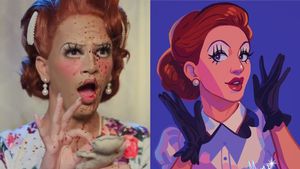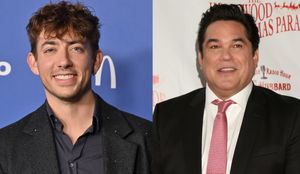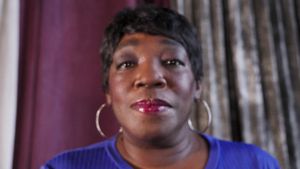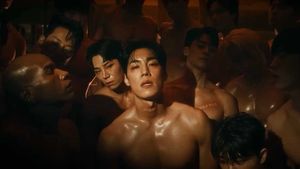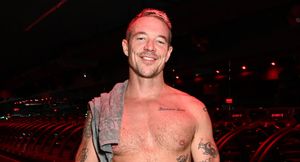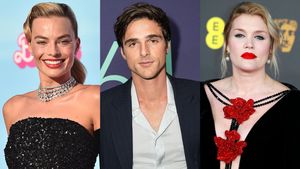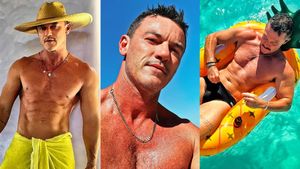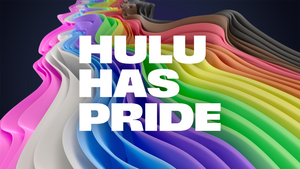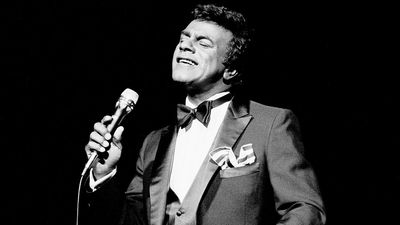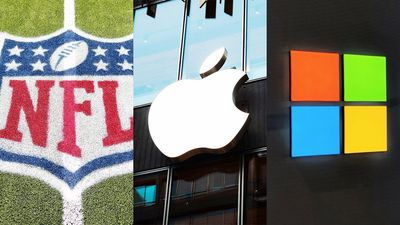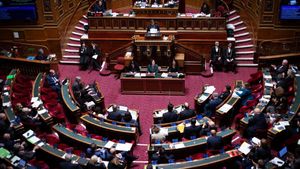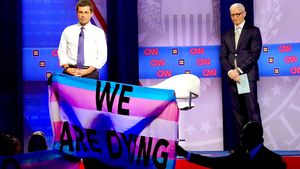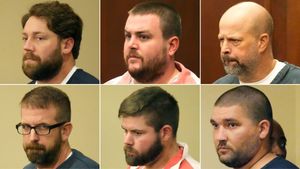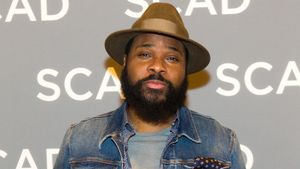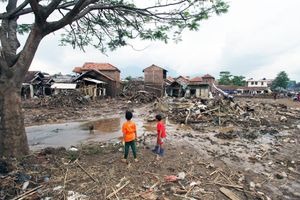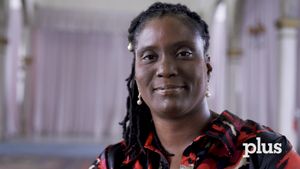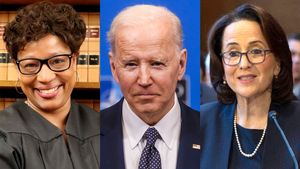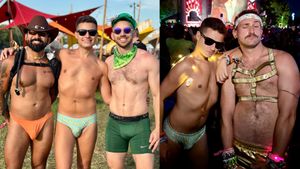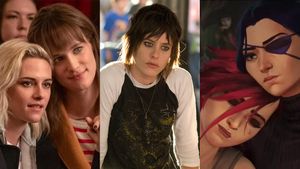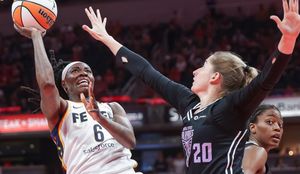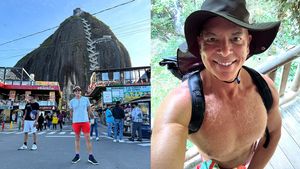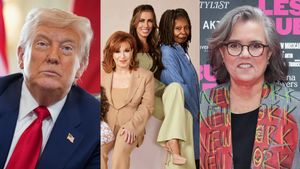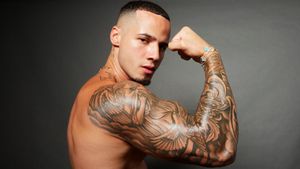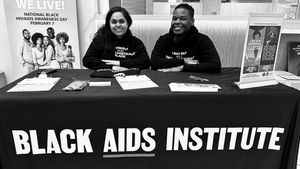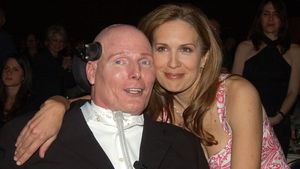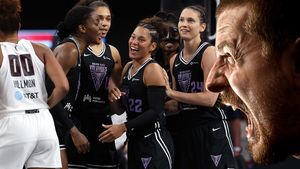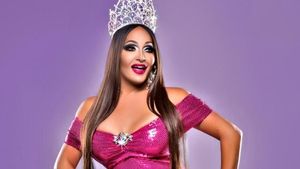CONTACTAbout UsCAREER OPPORTUNITIESADVERTISE WITH USPRIVACY POLICYPRIVACY PREFERENCESTERMS OF USELEGAL NOTICE
© 2025 Equal Entertainment LLC.
All Rights reserved
All Rights reserved
By continuing to use our site, you agree to our Privacy Policy and Terms of Use.
We need your help
Your support makes The Advocate's original LGBTQ+ reporting possible. Become a member today to help us continue this work.
Your support makes The Advocate's original LGBTQ+ reporting possible. Become a member today to help us continue this work.
From Chapter 8: Dr. Kinsey and the Institute for Sex Research
On Wescott and Kinsey
When Kinsey came to New York, one thing that interested him was the social circle of Wescott's friend Carl Malouf. A number of Malouf's friends were fellow veterans of World War II, such as illustrator Tommy Sullivan and his giant bisexual find, Michael Miksche. Wheeler's important younger lover of the fifties was an artist and poet named Ralph Pomeroy. Although Pomeroy was outside Malouf's circle, he had a powerful impression of Miksche, who snubbed him. "I was mad for him," he said. "He was one of the most stunning sexual people I've ever met." Miksche was a star among the volunteers filmed at the Institute, as were a couple named Jack Fontaine and Raymond Ungar.
Bill Miller, the handsome model, sometimes joined the group. George Lynes also got to know Kinsey, and over the next several years gave the Institute scores of photos, some for payment, some as gifts. These were mostly male nudes but also included celebrity portraits. Another interesting connection for Kinsey was the French filmmaker Francois Reischenbach. A frequent visitor to New York, he had known Wescott since the 1920s in Paris, as did his brother Philippe, an art dealer. Francois would later win an Academy Award for his documentary work and contribute two gay-themed films to Kinsey's archive.
Malouf remembered gay male gatherings of that era: "We lived in an age of innocence. A homosexual evening was so secret and hush-hush. Once, I remember, a bunch of us went to someone's apartment to see slides of some boys in bathing suits diving off a pier, photos someone had taken. For that we were all tiptoeing and shushing each other up! [W. H.] Auden, sitting on the floor, looked up when Glenway came in with Tommy Sullivan and me, and he said, 'Well, look who's here. The vice president of the National Institute of Arts and Letters.' That night after we left Glenway said, 'The nerve of Auden doing that!' Because there were others there -- I think Lincoln Kirstein was there. Every time I ran into Auden he was just as rude, about other things too."
University of Wisconsin Press
Copyright 2002 The Board of Regents of the University of Wisconsin System
As Wescott remembered it, the party had seemed in danger of remaining completely proper, perhaps because the young men were uncomfortable in Dr. Kinsey's presence. But, sitting next to Michael Miksche, Wescott decided to act: "I was playing it by ear, when I suddenly realized that I could do it; they were all acquaintances but I didn't know them too well. So I just slipped out of my chair and went down on my Michael. Whereupon, away they all went! Then I got back on my voyeuristic seat. Alfred was sitting in a corner. He made absolute dead silence! He could disappear in the room, you know, you'd forget all about him. Everybody said that. He never made a move, he didn't breathe, and the eyes were just--he was so fond, so nonnegative, so positive, and he made you feel so important and central, and suddenly there you were: you'd forgotten he was there. It was a magical effect. And suddenly he'd get up and move, and you'd think, 'My God, he's been there a long time!'"
Kinsey also visited New York homosexual bars and Times Square haunts where Wescott would never be seen. "I didn't know about that; he didn't go with me, but I'm sure he went with my friends," said Wescott. "But, you see, he never told you anything, just on principle, and you never asked him anything. But he wasn't very much interested in it. He would probably go to one of each kind, and just have a look. What he wanted to do was talk. And to get to know people."
Kinsey saw a party that was different from Malouf's at the Greenwich Village apartment of Ralph Pomeroy, Wheeler's companion. Pomeroy remembered that "Glenway suggested it. There may have been two hundred people, a huge success. Nothing happened. It was just beautiful young guys who gave off positive vibes. But Kinsey loved it. He wanted to see the social behavior of gays. It wasn't just about sex."
Recommended Stories for You
From our Sponsors
Most Popular
More Videos
0 seconds of 1 minute, 50 secondsVolume 0%
Press shift question mark to access a list of keyboard shortcuts
Keyboard Shortcuts
Shortcuts Open/Close/ or ?
Play/PauseSPACE
Increase Volume↑
Decrease Volume↓
Seek Forward→
Seek Backward←
Captions On/Offc
Fullscreen/Exit Fullscreenf
Mute/Unmutem
Decrease Caption Size-
Increase Caption Size+ or =
Seek %0-9
Next Up
Pride Today | Adam Snow Dishes on His Love for the Adult Entertainment Industry
00:42
Copied
Live
00:00
01:50
01:50
Watch Now: Pride Today
Latest Stories
The fight to eradicate dangerous ‘conversion therapy’ isn’t over, alarming new report warns
August 08 2025 3:34 PM
Florida teacher fired for using student's nickname won't get her job back
August 08 2025 11:52 AM
Gay Jamaican asylum seeker 'suffering' in ICE custody, lawyer says
August 08 2025 11:42 AM
How Elon Musk turned his pain into policy—and targeted the trans community
August 10 2025 6:00 AM
State Dept. omitting anti-LGBTQ+ actions from foreign human rights reports
August 08 2025 5:52 PM
Trump cans IRS commissioner and replaces him with Scott Bessent for now
August 08 2025 3:43 PM
Massachusetts lesbian Gov. Maura Healey signs abortion and gender-affirming care shield law
August 08 2025 12:28 PM




